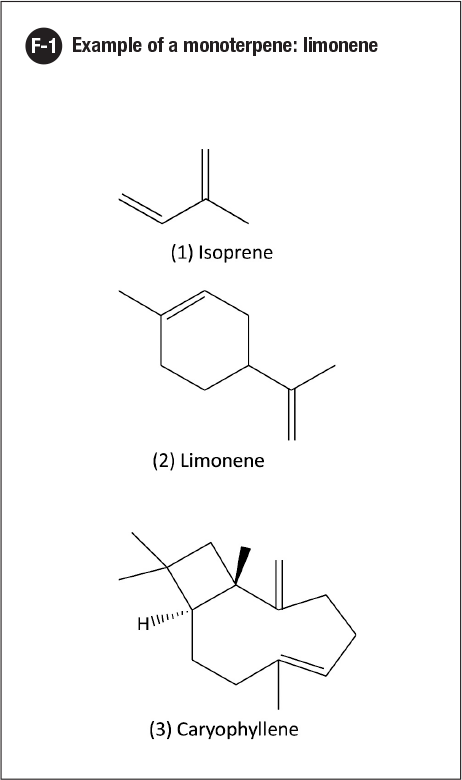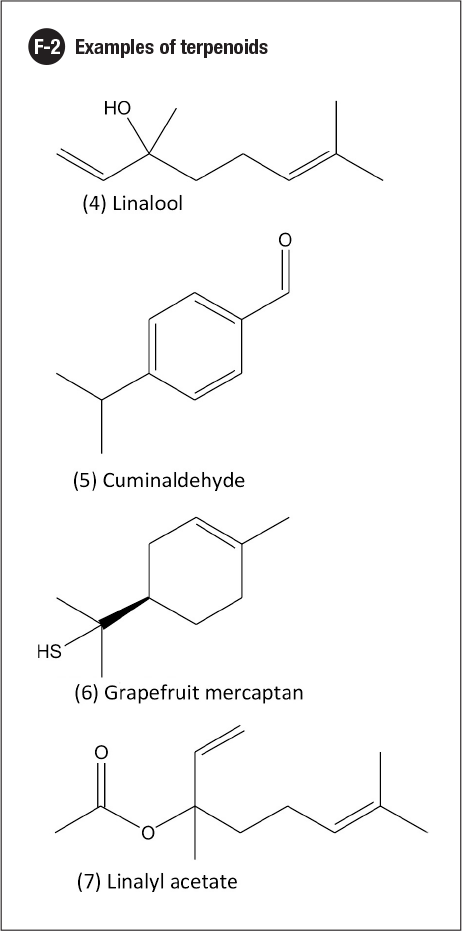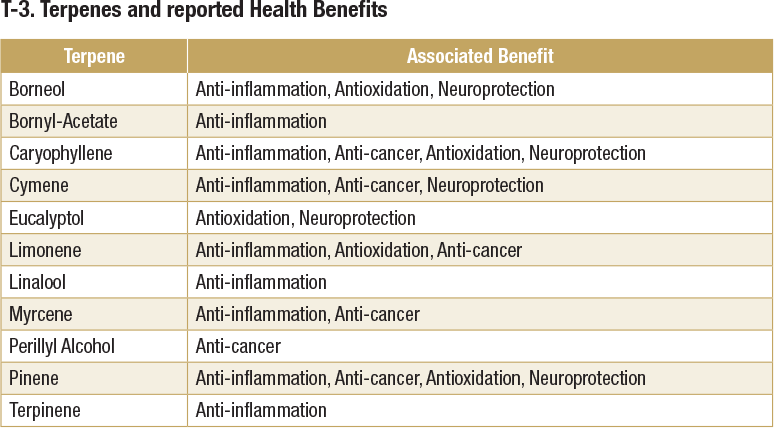Executive Summary
Consumers are increasingly aware of terpenes and terpenoids due to their purported health effects, mood-modifying qualities and contribution to flavor. Terpenes and their derivatives are found in spices, herbs, fruits, vegetables, hops, cannabis and other sources. Flavor contributions include fruity, herbal, cooling, flavor and others. A number of health benefits have been reported in literature, such as anti-inflammation, neuroprotection, anticancer, anti-microbial and antioxidant. Decreased anxiety, anti-depressant, mood improvement, increased cognitive ability and increased contentment have been ascribed to terpenes.
Selection of terpenes to be used should consider regulatory issues, stability, chirality, perceived health benefits, availability and flavor/aroma. You may want to choose one or two terpenes to be highlighted due to flavor, mood or health benefits. Alternatively, a number of terpenes with the desired effects can be blended together. Essential oils and other extracts may be used to supply some or all of the terpenes. With this in mind, you can create flavors with health halos.
What are Terpenes?
Terpenes are a class of naturally occurring, unsaturated hydrocarbon compounds. Monoterpenes comprise two isoprene units, which are five carbon branched chains (F-1).

As seen from the monoterpene limonene, you can discern the two five-carbon branched subunits. A compound with three isoprene units is called a sesquiterpene, such as caryophyllene. There are terpene compounds with 20 carbons or more, but these tend to be nonvolatile and not important to our discussion on flavors. Terpenes can have one or more rings, aromatic rings or no rings at all.
Similar compounds can contain functional groups typically containing oxygen or sulfur (F-2). These are termed terpenoids and tend to be much more potent flavor compounds than terpenes and can be more stable and soluble, as well. In addition, functional groups like alcohols and acids can form esters, like linalyl acetate (7). The result is a vast number of compounds, many with desirable flavor properties that can be used for flavor creation (T-1).


Terpenes can be sourced from a variety of extracts, e.g., cannabis, hops, citrus, spices, herbs, etc., or purchased as a purified compound from a flavor chemical supplier. Terpenes can also be formed naturally via fermentation. One option is to source your terpenes and terpenoids from botanical extracts. Below is a list of terpenes (T-2) found in some common culinary spices and herbs.

Reported Health Benefits of Terpenes
Terpenes have entered the consumer conscious for several reasons. Botanical extracts, which are rich in terpenes, may be more favorable to some consumers than “natural flavors,” where the source is not revealed. Secondly, many consumers want to take charge of their own health by supplementing their diet with botanicals imparting perceived health benefits, often from terpenes. In T-3, the reported health benefits are listed from various terpenes found in the air as one walks through a pine forest, an act referred as “forest bathing.”link.description.footnote3 Koyama and Heinbockel reviewed studies pertaining to the impact of essential oils and terpenes on health.link.description.footnote4 In T-4, details the impact of terpenes and terpenoids.


One major contribution to this phenomenon is the rise of Cannabis sativa (commonly referred to as cannabis or marijuana). While still widely illegal in the United States, an increasing number of states and Canada have legalized cannabis use in the treatment of specified medical ailments. Despite still being illegal at the federal level, consumers are exploring perceived health benefits of both psychoactive and non-psychoactive components, including terpenoids. In fact, looking for “terpenes” and “health” in an internet browser, the results are overwhelmingly about cannabis. There are also emotional benefits that are reported to be associated with terpenes. Various strains of cannabis are known for their particular terpene composition. The closest relative to Cannabis sativa is Humulus lupulus, better known as hops. Once almost exclusively used for beer manufacture, hops can now be found in other foods and beverages, such as hop waters or ice cream. A review by Nuutinen detailed the many medicinal properties of the oils of Cannabis sativa and Humulus lupulus, along with references for their reported medical effect (T-5).link.description.footnote5 Because both species are bred and cultivated for their aroma, the actual terpene composition can vary widely between cultivars.

In the second part of this article, we will talk about terpenes and mood alteration, selection of terpenes and ideas on how to assemble your flavor.






